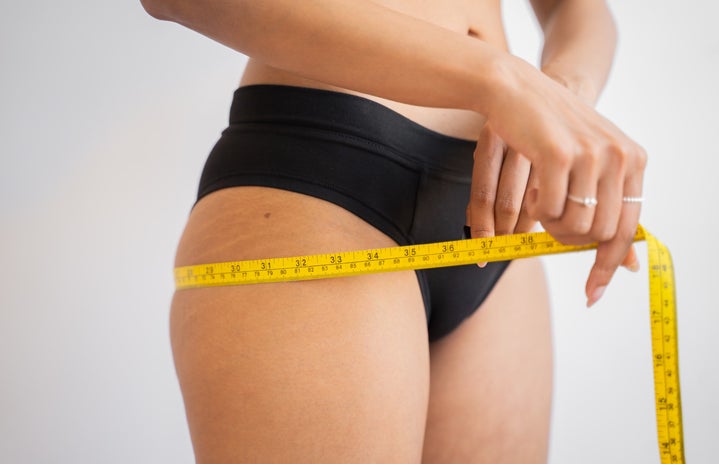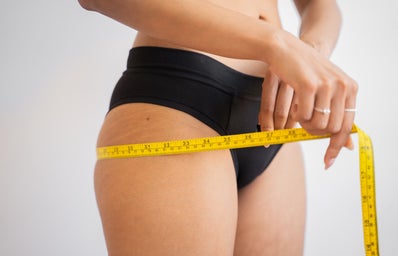TRIGGER WARNING: This article heavily discusses body image, eating, exercise habits, disorders, and so on.
Since the beginning of time, women’s body standards have completely changed by the decade. Weight, height, athleticism, proportions, cup size— none of it has managed to stay consistent. It’s impossible for women to keep up with these constantly changing standards, and viewing them as “trends” alone can be incredibly damaging to their body images.
Body Trends Throughout History
Body trends date back thousands of years. For instance, in the Ancient Egyptian era (1292-1069 B.C.), the “ideal” woman was slender, had a symmetrical face, and had high features including a waistline, and narrow shoulders (according to Science of People). In another era following Ancient Egypt, Ancient Greece (500-300 B.C.) expected women to be “plump” and “full-bodied,” classifying fair skin as what is most desirable.
These contrasting and inconsistent bodily trends and expectations for women have only become more rigorous and fast-paced in the 20th and 21st centuries. As a more recent example, women in the “Golden Age of Hollywood” (1930s-1950s) were ideally curvy, had large breasts, and had hourglass figures. Just 10 years later in the “Swinging Sixties” (1960s), women were ideally very thin and almost “adolescent” looking. Those curves and breasts that were trending the decade before quickly became socially unacceptable. Today in the 2020s, we are in the middle of a new transition of body trends: the end of the “BBL Era” and the return of “90s Skinny.”
The End of the “BBL Era”
We all know of the Kardashians. Love them or hate them, none of us can argue their influence on trends, particularly body trends. In fact, it is often said that they are single-handedly responsible for the creation of recent standards surrounding women’s butts due to their linkage to “BBL,” or Brazilian Butt Lift, plastic surgery procedures.
According to the American Board of Cosmetic Surgery, a Brazilian Butt Lift is “…a specialized fat transfer procedure that augments the size and shape of the buttocks without implants. Excess fat is removed from the hips, abdomen, lower back, or thighs with liposuction, and a portion of this fat is then strategically injected into the buttocks.” Many of the Kardashians have had this procedure done, creating their signature looks. This has caused the BBL to be an extremely fast-growing procedure and shifted the 90s skinny standard to an extreme hourglass figure, which can usually only be achieved through surgery or genetics. So, it is quite unachievable.
Recently, a couple of Kardashians including Kim have removed their BBLs, and sent the beauty standard clock right back…
Back to “Heroin Chic”: 90s Skinny
Kim Kardashian had her BBL removed this year and has lost a large amount of weight in a short period of time. She reported that she lost a lot of weight to fit in her infamous 2022 Met Gala look: an original Marilyn Monroe dress. Her figure has shifted from curvy and hourglass-esque, to a more 90s-skinny style very quickly. In the 90s, many referred to this look as “Heroin Chic” due to the extreme weight expectations that were typically unhealthy, similar to the result of using hard drugs.
Now, very slim features among women are trending again: a trend which is not achievable for many women in the world. Women also went to extreme lengths to achieve the 90s skinny look, such as the promotion of eating disorders, versus receiving plastic surgeries to achieve the hourglass BBL look just years before.
The Impact body trends have on women
These constantly changing body standards are impossible to keep up with for women. So many of them rely on genetics, expensive surgeries, extremely disordered eating or exercise habits, and so forth. Under these unrealistic standards and trends, women have developed poor relationships with their body images and the way in which they care for or fuel their bodies. According to the National Library of Medicine, “It has been concluded that there is a rising surgence of body dysmorphia in adolescents.” Body Dysmorphia is “…a mental health condition in which you can’t stop thinking about one or more perceived defects or flaws in your appearance” (according to Mayo Clinic). Body Dysmorphia can impact a person greatly, causing them to feel constantly anxious and embarrassed about their bodies. This, in turn, may cause them to avoid many social situations. Eating Disorders are also on the rise, many adolescents suffering from Anorexia and Bulimia in an attempt to meet the radical skinny standards we experienced in the 90s, and are experiencing again today.
Eliminating Bodily beauty standards as trends
Women’s bodies should have never been treated as trends, and should not be treated as such in the future. Everyone’s body is different, and every body is beautiful. Instead of encouraging these harmful expectations, we should normalize caring for our bodies and prioritize health over appearance, which includes our mental health and the emotional relationships we have with our bodies.




